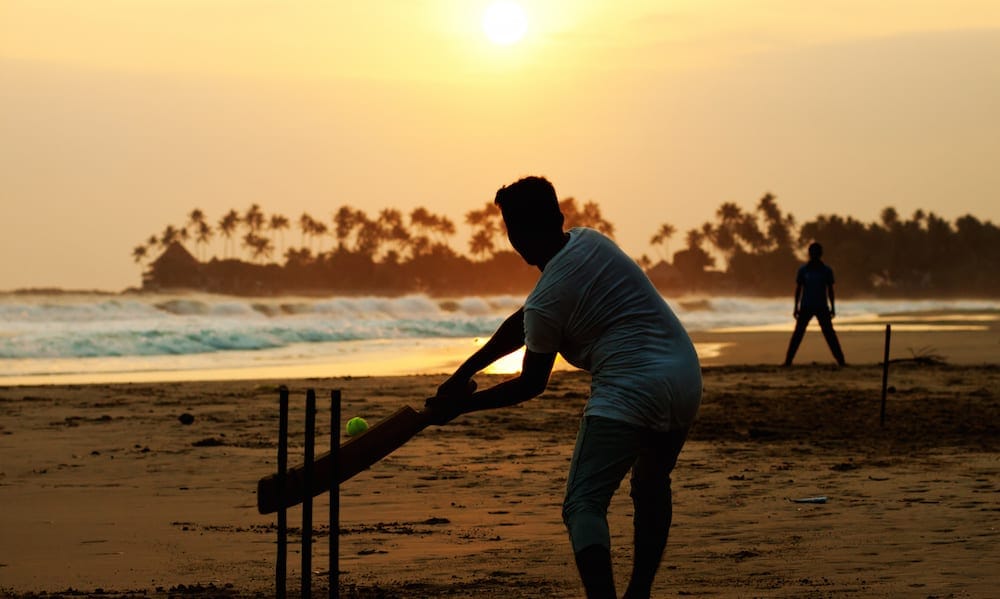Without a doubt, summer holidays are my favourite time of year. The weather, the food, the beach … but more important than any of those things is the way that my family celebrates each other.
There’s just something about the summer break and it’s enforced ‘tools-down’ that makes you stop and take stock of all of the good stuff. School is out, deadlines have been met, computers are switched off, and all over the country extended family board planes and trains in order to connect with each other. It’s magical.
For my family, nothing says ‘relax’ like loading up the back of the car with towels, tunes, food, and games and hitting the creek. We hop over bindiis, arms laden with summer props, and set up shade on the grass by the creek where we have no plans to move for the best part of a day.
And of course, there’s a regulation game of family cricket
It’s a ritual that’s passed down from generation to generation in most Aussie families. Whether it’s garbage bin stumps in a backyard, a few sticks in the sand at the beach, or genuine wicket set in a park, there’s something intrinsically ‘summer’ about turning any kind of gathering into a test match, isn’t there.
I think part of the appeal is the way that a family cricket match sees everyone on the field as equals, as a team. The youngest, the eldest and everyone in between.
One of my favourite family memories is the time my brother-in-law very seriously, and painstakingly demonstrated the art of bowling to my then five-year-old daughter. On bended knee he gently guided her arm to show her the moves necessary to perform an ‘underarm delivery’. Once he was certain she understood, he ran to his spot by the stumps, picked up his bat and encouraged her to have a go.
At which point she promptly bowled him out.
How to Play Beach Cricket with your Family
The truth is, every family team has their own rules when it comes to beach or backyard cricket, but occasionally a rogue intruder comes in with their team’s rules and the waters become muddied.
The following is a very basic breakdown, the basis of which many variations are formed, and may be referred to in time of conflict.
You will need:
Ball: Genuine cricket balls are not allowed and may only be replaced with tennis balls or handballs. Electrical tape wrap optional, but will offer a certain level of protection from dog-puncture.
Wickets: If real wickets are unavailable you may use: an esky, garbage bin, sticks
Bat: Any bat provided by a visiting player must be assessed by the elders of any family for approval. Pending a bat being unavailable, an altered fence paling, or likewise sized timber may be substituted.
The rules:
Due to the differing landscapes that form the pitch of a family game of cricket, some universal laws apply that accommodate many field variations.
First ball, not out: No player may be dismissed as out on the first ball they face. This ensures everyone gets a fair go, and motivates even the most unsportsy cousins to take their fair turn on the, often scorching, field in reciprocation.
One bounce, one hand: If the ball has ricocheted off a wall, tree, fence, or car the fielder must only attempt a catch using one hand. This rule comes in handy when the fielder has a drink or sausage sandwich in the other hand.
Some teams also allow, in the interest of ball preservation and game momentum, catches to be taken one-handed if the ball has bounced once on the regular field.
Six and out: In the event that a batter hits the ball over a fence, into a body of water, or into a tree the following will apply:
- The batter will be awarded six runs
- The batter will be dismissed as ‘out’
- The batter will embark on a mission to retrieve the ball
Bowling: Anyone under 12 years old, or deemed otherwise allowed by a field majority may bowl underarm. Everyone else must channel Glenn McGrath.
Tippity run: Basically, if you hit the ball at all, you gotta run!
No LBWs: Enforcing LBWs in a family beach or backyard cricket match is simply too contentious. Anyone thought to be deliberately blocking the ball with their body must face the scorn of the rest of the players, and that is often enough to ensure best behaviour.
The end: A beach or backyard cricket test match is only deemed officially over when:
- Poor light stops play
- All the balls have been lost, or intercepted by the dog
- Dinner is ready
Creating family memories with your team is always worth it
Part of what makes beach cricket so special for me, is that time of connection with my family. It’s so special, and so important. My family is my team in life always, not just in beach cricket. Taking the time to make these kind of memories helps me, and them I hope, cement that idea in the times when life is not as fun.
If you are looking for inspiration and other ways that you can build up your family team, check out Bupa’s team family page.



